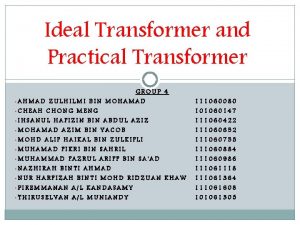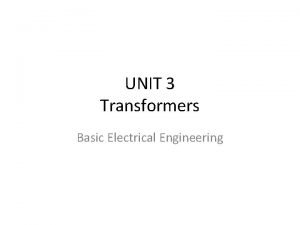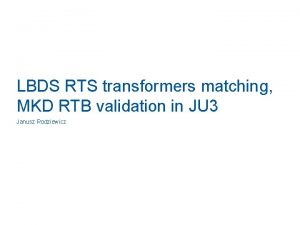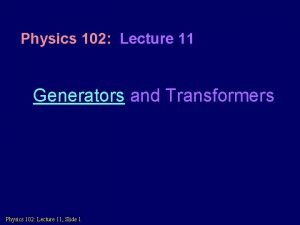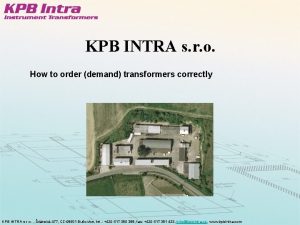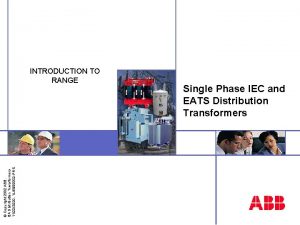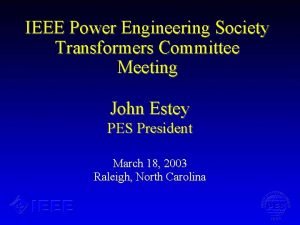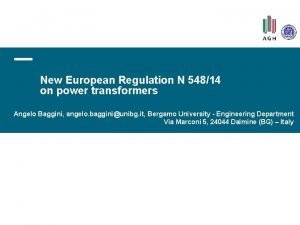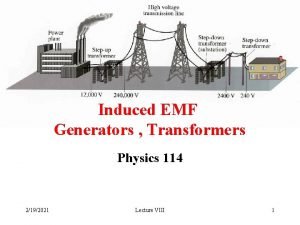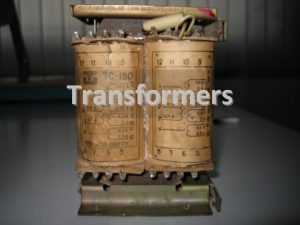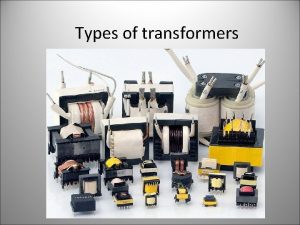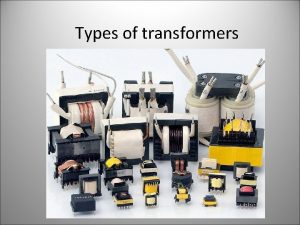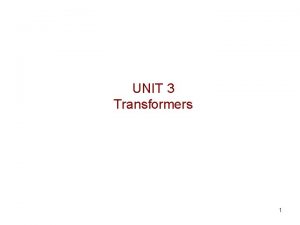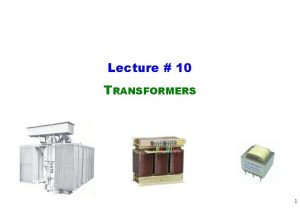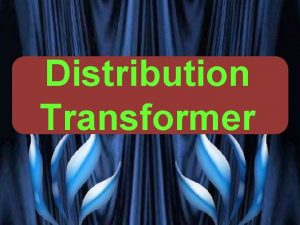Unit1 Transformer What is transformer Transformers are electrical















- Slides: 15

Unit-1 Transformer

What is transformer? • Transformers are electrical devices used to convert or "transform" AC voltage from one level to another. (high to low or low to high) • Input and output are AC • They do this by the principle of electromagnetic induction


Symbol of Transformer

Transformer Operation • An electrical transformer normally consists of a ferromagnetic core and two coils called "windings". • A transformer uses the principle of mutual inductance to create an AC voltage in the secondary coil from the alternating electric current flowing through the primary coil. • The voltage induced in the secondary can be used to drive a load.

Transformer Structure

Transformer Operation • The working principle of transformer is very simple. It depends upon Faraday's law of electromagnetic induction. Mutual induction between two or more winding is responsible for transformation action in an electrical transformer. Faraday's Laws of Electromagnetic Induction • According to these Faraday's laws, "Rate of change of flux linkage with respect to time is directly proportional to the induced EMF in a conductor or coil".

EMF Equation of transformer Consider AC Sinusoidal flux

Transformation Ratio “K” • The transformation ratio is defined as the ratio of the secondary voltage to primary voltage. It is denoted by the letter K.

Types of losses in Transformer 1) Copper loss 2) Iron loss : a) Hysteresis loss b) Eddy current loss

Transformer Efficiency • The power loss is converted to heat. The heat produced can be found by calculating the transformer efficiency.

Voltage Regulation of Transformer The voltage regulation is the percentage of voltage difference between no load and full load terminal voltages of a transformer with respect to its full load voltage.

Problems 1. A transformer has a primary voltage of 230 v and turns ratio of 5: 1. Calculate the secondary voltage 2. A transformer has 200 turns in the primary, 50 turns in the secondary, and 120 volts applied to the primary (Vp). What is the voltage across the secondary (V s)?

Equivalent circuit of Transformer

Phasor Diagram
 Mikael ferm
Mikael ferm Unit1 lesson2
Unit1 lesson2 Introduction of transformer
Introduction of transformer Ideal transformer and practical transformer
Ideal transformer and practical transformer Voltage regulation definition
Voltage regulation definition Application of solid insulating material
Application of solid insulating material Josipa mokrovića 12
Josipa mokrovića 12 Rts transformer
Rts transformer Transformers physics
Transformers physics Romans 12 6 8
Romans 12 6 8 Kpb intra instrument transformers
Kpb intra instrument transformers Grounding transformers
Grounding transformers Abb distribution transformers
Abb distribution transformers Ieee transformers committee
Ieee transformers committee Transformers
Transformers Generator
Generator



